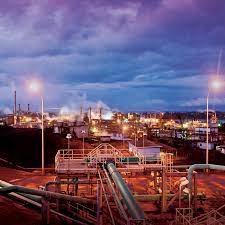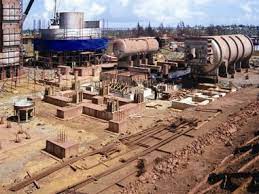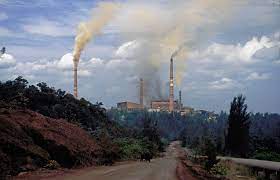EMPRESA CANADIENSE SHERRITT INVIERTE EN CUBA PARA AUMENTAR LA PRODUCCIÓN DE NÍQUEL Y COBALTO
La empresa Canadiense quiere incrementar su producción en Moa hasta un 20% por encima de las 34.876 toneladas métricas producidas en 2020. El boom del mercado del automóvil eléctrico, para el que son fundamentales las baterías potentes y duraderas que requieren el uso de cantidades importantes de níquel y cobalto, hacen claro que el negocio de los coches eléctricos, es el motivo por el que Sherritt va a invertir aún más en Cuba.
Se estima que las reservas cubanas de minerales lateríticos de níquel son las segundas más grandes del mundo después de Zaire.
La mayoría de estos depósitos lateríticos se ubican en las áreas de Moa y Nicaro, al noreste de la isla.
El 15 de diciembre de 1994, el gobierno cubano y la empresa canadiense Sherritt International establecieron la empresa conjunta Moa Nickel S.A. en virtud de un acuerdo de propiedad al 50%. Moa Nickel S.A. tiene permiso para extraer minerales lateríticos de níquel en 4.964 hectáreas en el área de Moa y también para operar una planta industrial que produce sulfuros mixtos de níquel y cobalto a partir del mineral local. (Esta planta fue expropiada por el gobierno cubano en 1960 a la empresa estadounidense Freeport Sulphur Company y rebautizada como planta “Comandante Pedro Sotto Alba”).
AUMENTO DE LA PRODUCCIÓN EN CUBA
Según la agencia Bloomberg, el nuevo titular de la corporación, León Binedell, quien visitó Cuba a fines de octubre, quiere incrementar la producción en su joint venture en Moa entre un 15% y un 20% por encima de las 34.876 toneladas métricas. producido el año pasado.
El plan, presentado el miércoles pasado, implica extender la vida útil de la mina existente más allá de 2040 y está diseñado para aprovechar la fuerte demanda esperada de metales utilizados en baterías recargables a medida que el mundo se aleja de los combustibles fósiles.
También está destinado a marcar un punto de inflexión para Sherritt, quien reestructuró su deuda el año pasado después de salir de un costoso proyecto en Madagascar. Los próximos pagos de la compañía vencen en cinco años, momento en el que Binedell espera haber completado la expansión.
“Se requiere una medida de velocidad. La intención es aprovechar al máximo la producción y expansión antes del vencimiento de nuestra deuda”, dijo a la agencia especializada en información comercial. Según la empresa, si bien las perspectivas de demanda de metales son buenas, existen desafíos en el procesamiento de minerales complejos que se encuentran en Cuba, donde las empresas extranjeras también tienen que eludir el embargo comercial de Estados Unidos y trabajar con un gobierno. hambriento de moneda.
Sherritt espera brindar una actualización sobre su nuevo proyecto en Cuba el próximo trimestre, ya que la minera trabaja con sus socios cubanos para finalizar cronogramas, estimaciones de capital y alternativas de financiamiento. Los cimientos de una de las nuevas instalaciones ya se han colocado como parte de un plan de expansión previamente archivado, que ayudará a mantener bajos los costos de construcción.
LA EXPANSIÓN TIENE UN IMPACTO AMBIENTAL SIGNIFICATIVO
El gobierno cubano otorgó a Moa Nickel S.A. un período de gracia de 10 años (1994 a 2004) para cumplir con la ley ambiental cubana. Ahora Moa Nickel S.A. ha recibido especial flexibilidad ambiental por parte del gobierno cubano, incluyendo que el principio de que el derecho a minar tiene prioridad sobre la conservación de los bosques.
Desde 1994, Moa Nickel S.A. tiene un permiso especial para extraer “arena de coral” de Moa Bay. En 2004, se renovó el permiso especial de Moa Nickel S.A. para desechar desechos extremadamente tóxicos en el río Cabañas.
En una evaluación de estudio publicada, la expansión de la producción dañará la vegetación, el paisaje, las aguas costeras y los ríos causados por las actividades mineras de Moa Nickel S.A. Se utilizó una comparación de varias imágenes cronológicas de Landsat para observar las áreas de daño ambiental.
Unas 576 hectáreas de tierra se han visto afectadas por las actividades mineras en Moa Nickel S.A. desde 1985; No hay evidencia clara de reforestación en tierras de Moa Nickel S.A. entre 1999 y 2008. La planta industrial de Moa Nickel S.A., Comandante Pedro Sotto Alba, está contaminando 9,72 kilómetros del río Cabañas con desechos extremadamente agresivos.
Unas 275 hectáreas de vegetación costera fueron destruidas por depósitos de residuos de relaves mineros ubicados incorrectamente demasiado cerca de la línea costera. La columna de contaminación del río Cabañas y el depósito de residuos de relaves mineros afectaban 1.139 hectáreas de aguas costeras en 2003.
Al menos 8 kilómetros de la línea costera se han visto gravemente afectados desde 2003.
Moa Nickel S.A. ha estado utilizando 805 hectáreas de Moa Bay para la extracción de coral durante los últimos catorce años.
La recomendación más obvia de este estudio es la urgente necesidad de detener la contaminación del río Cabañas, la extracción de coral en la bahía de Moa y el almacenamiento inadecuado de relaves mineros en áreas costeras asociadas con las operaciones de Moa Nickel SA Además, Es importante que las prácticas de manejo de reforestación y recuperación se apliquen enérgicamente en el área de Moa.
Podría ser útil investigar si Sherritt u otras empresas extranjeras han recibido “flexibilidades ambientales” similares en Cuba y si el gobierno cubano está utilizando este tipo de “incentivo” para atraer inversión extranjera a la isla.
CANADIAN COMPANY SHERRITT INVESTING IN CUBA TO INCREASE PRODUCTION OF NICKEL AND COBALT
The Canadian company wants to increase its production in Moa up to 20% above the 34,876 metric tons produced in 2020. The boom in the electric car market, for which powerful and durable batteries require the use of significant quantities of nickel and cobalt makes it clear that the electric car business is the reason why Sherritt is going to invest even more in Cuba.
Cuba’s reserves of lateritic nickel minerals are estimated to be the world’s second-largest after Zaire.
Most of these lateritic deposits are located in the Moa and Nicaro areas, on the northeast of the island.
On December 15, 1994, the Cuban Government and Canadian company Sherritt International established the joint venture Moa Nickel S.A. under a 50-50 ownership agreement. Moa Nickel S.A. has permission to extract lateritic nickel minerals in 4,964 hectares in the Moa area and also to operate an industrial plant that produces mixed sulfides of nickel and cobalt from the local ore. (This plant was expropriated by the Cuban Government in 1960 from the U.S. company Freeport Sulphur Company and renamed the “Comandante Pedro Sotto Alba” plant.)
INCREASE OF PRODUCTION IN CUBA
According to the Bloomberg agency, the new head of the corporation, Leon Binedell, who visited Cuba at the end of October, wants to increase production in his joint venture in Moa between 15% and 20% above 34,876 metric tons. produced last year.
The plan, unveiled last Wednesday, involves extending the life of the existing mine beyond 2040 and is designed to take advantage of the expected strong demand for metals used in rechargeable batteries as the world shifts away from fossil fuels.
It is also destined to mark a turning point for Sherritt, who restructured its debt last year after exiting a costly project in Madagascar. The company’s next payments are due in five years, at which point Binedell expects to have completed the expansion.
“A measure of speed is required. The intention is to take full advantage of production and expansion before the maturity of our debt,” he told the agency specializing in business information. According to the company, while the prospects for demand for metals are good, there are challenges in processing complex minerals found in Cuba, where foreign companies also have to circumvent the United States trade embargo and work with a government. hungry for currency.
Sherritt expects to provide an update on its new project in Cuba next quarter, as the miner works with its Cuban partners to finalize schedules, capital estimates, and financing alternatives. The foundations for one of the new facilities have already been laid as part of a previously shelved expansion plan, which will help keep construction costs low.
EXPANSION HAS A SIGNIFICANT ENVIRONMENTAL IMPACT
The Cuban Government granted Moa Nickel S.A. a 10–year grace period (1994 to 2004) to come into compliance with the Cuban environmental law. Now Moa Nickel S.A. has received special environmental flexibility from the Cuban government, including that the principle that the right to mine takes precedence over the conservation of forests.
Since 1994, Moa Nickel S.A. has had special permission to extract “coral sand” from Moa Bay. In 2004, Moa Nickel S.A.’s special permission to discard extremely toxic waste into the Cabañas River was renewed.
In a published study assesment, the expansion of the production will damage to vegetation, landscape, coastal waters, and rivers caused by the mining activities of Moa Nickel S.A. Comparison of several chronological Landsat images was used to observe the environmental damage areas.
Some 576 hectares of land have been impacted by mining activities at Moa Nickel S.A. since 1985; there is no clear evidence of reforestation within Moa Nickel S.A. lands between 1999 and 2008. Moa Nickel S.A.’s industrial plant, Comandante Pedro Sotto Alba, is polluting 9.72 kilometers of the Cabañas River with extremely aggressive wastes.
Some 275 hectares of coastal vegetation were destroyed by deposits of mining tailings waste improperly located too close to the coastal line. The pollution plume from the Cabañas River and the mining tailings waste deposit were affecting 1,139 hectares of coastal waters in 2003.
At least 8 kilometers of the coastal line have been severely impacted since 2003.
Moa Nickel S.A. has been using 805 hectares of Moa Bay for coral mining during the last fourteen years.
The most obvious recommendation from this study is the urgent necessity to stop the pollution of the Cabañas River, the mining of coral in the Moa Bay, and the improper storage of mining tailings on coastal areas associated with the operations of Moa Nickel S.A. In addition, it is important that reforestation and recovery management practices be vigorously applied in the Moa area.
It might be useful to investigate if Sherritt or other foreign companies have received similar “environmental flexibilities” in Cuba and if the Cuban Government is using this kind of “incentive” to attract foreign investment to the island.
Agencies/ DDC/ ASCE/ Eudel E.Cepero/ ResearchGate/ Extractos/ Excerpts/ Internet Photos/ Arnoldo Varona/ www.TheCubanHistory.com
THE CUBAN HISTORY, HOLLYWOOD.












